Corsair Hydro GFX GeForce GTX 980 Ti Review
Corsair doesn't like tackling a new market unless it can offer a premium product. So when the company wanted to make a graphics card, it partnered with MSI to create a high-end stunner.
Why you can trust Tom's Hardware
Gaming Benchmarks
Battlefield 4
It wasn't immediately apparent, but once we plugged our benchmark results into the graph, we realized that Corsair's liquid-cooled card fares well in Battlefield 4. Although it's advertised with a lower stock clock rate than Gigabyte's GeForce GTX 980 Ti Xtreme Gaming, Corsair's Hydro GFX almost matches that board's performance.
The results are very similar with the resolution set to 3840x2160. Corsair's card almost mirror's Gigabyte's, trailing by just a few frames per second.
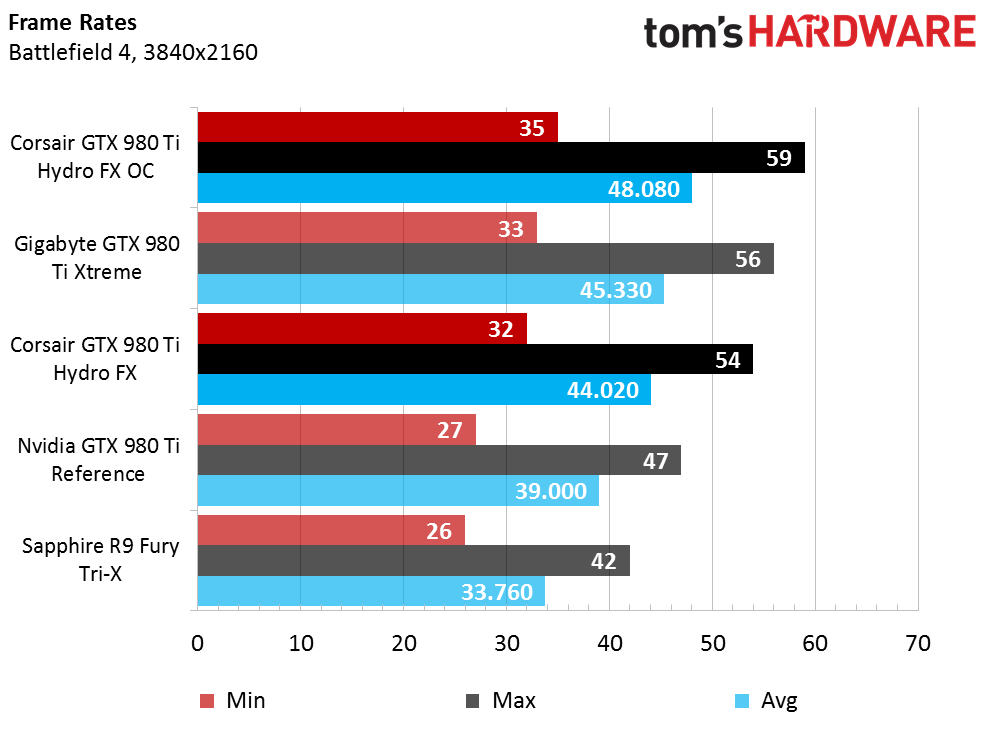
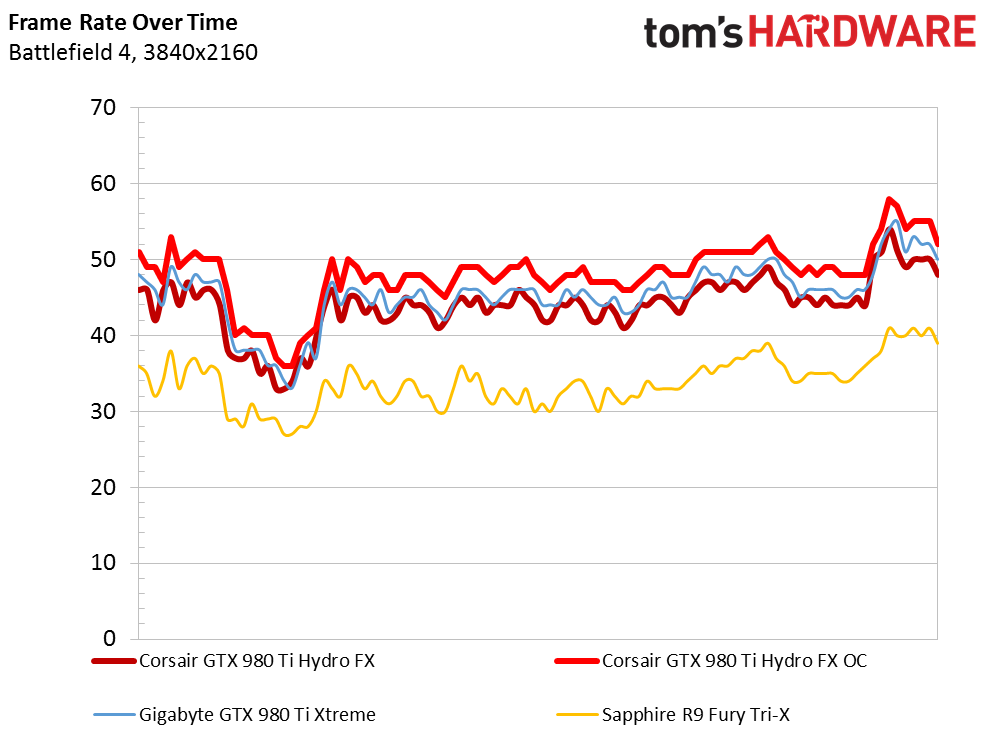
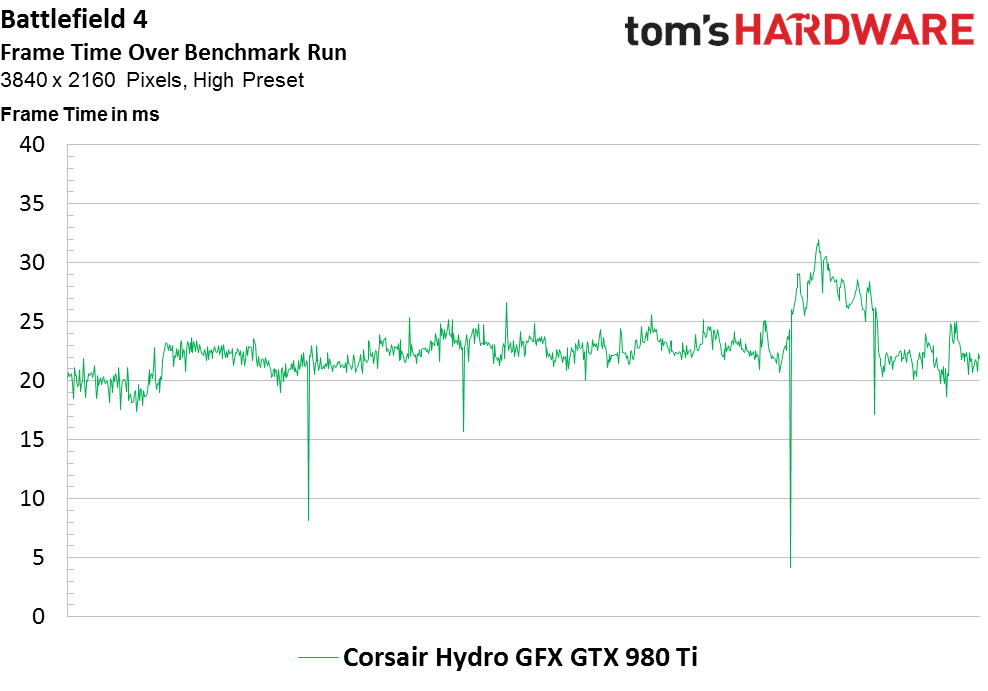
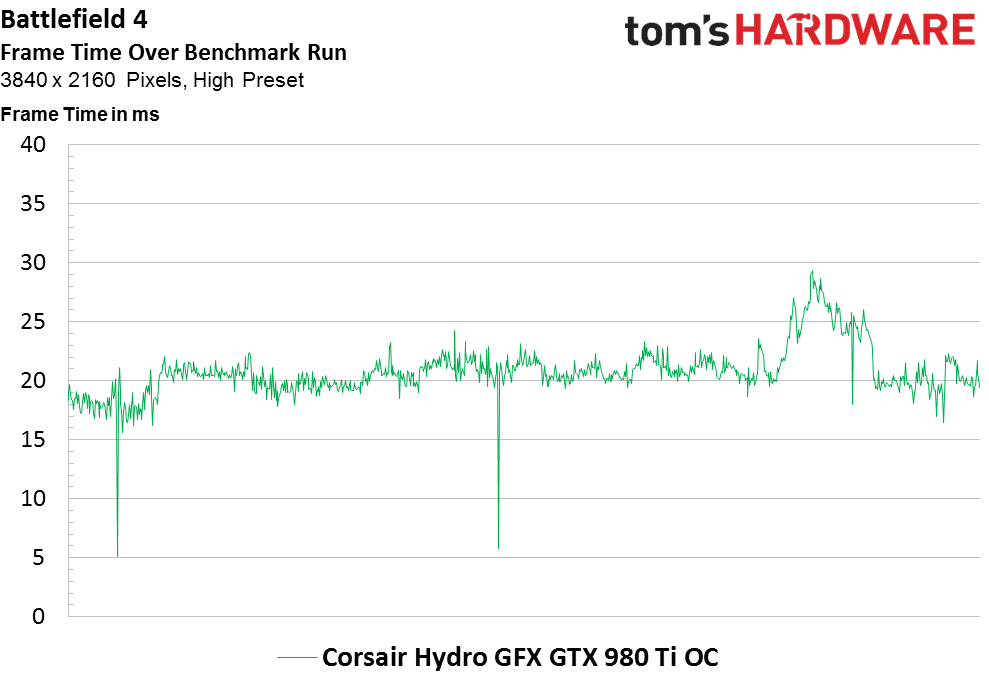
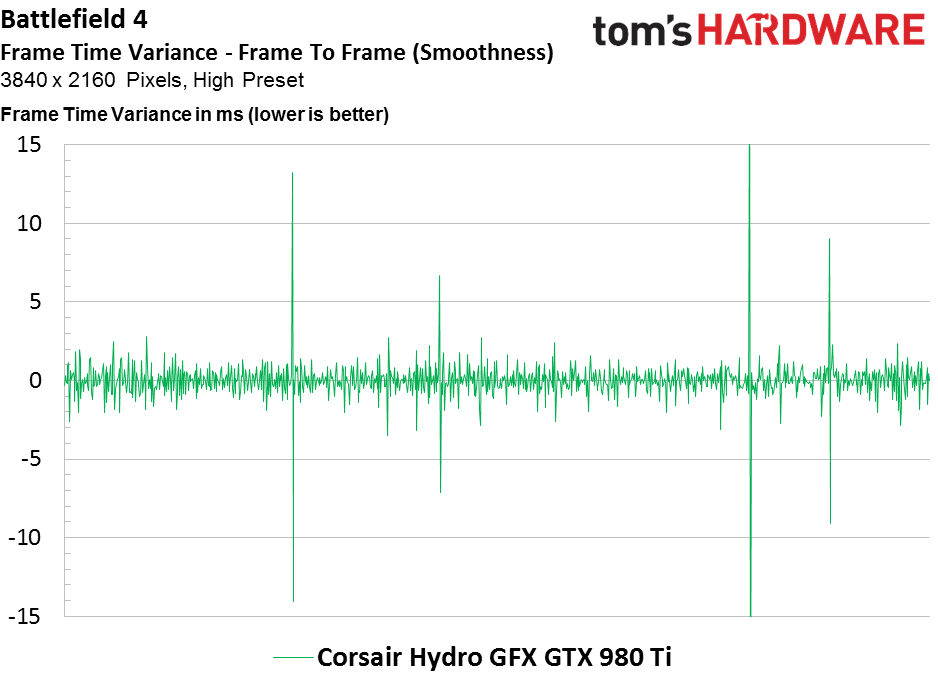
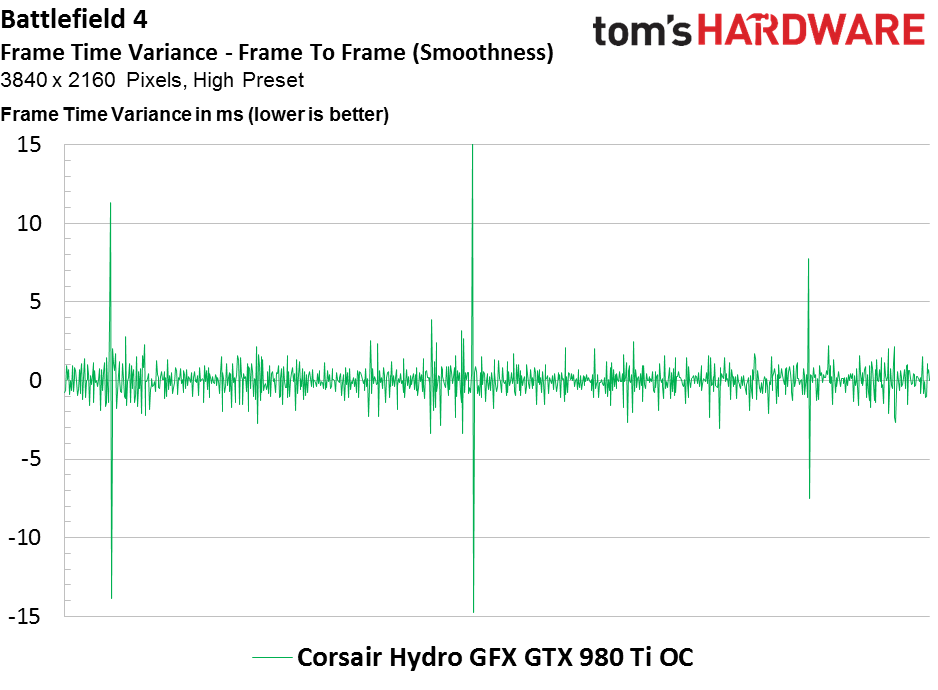
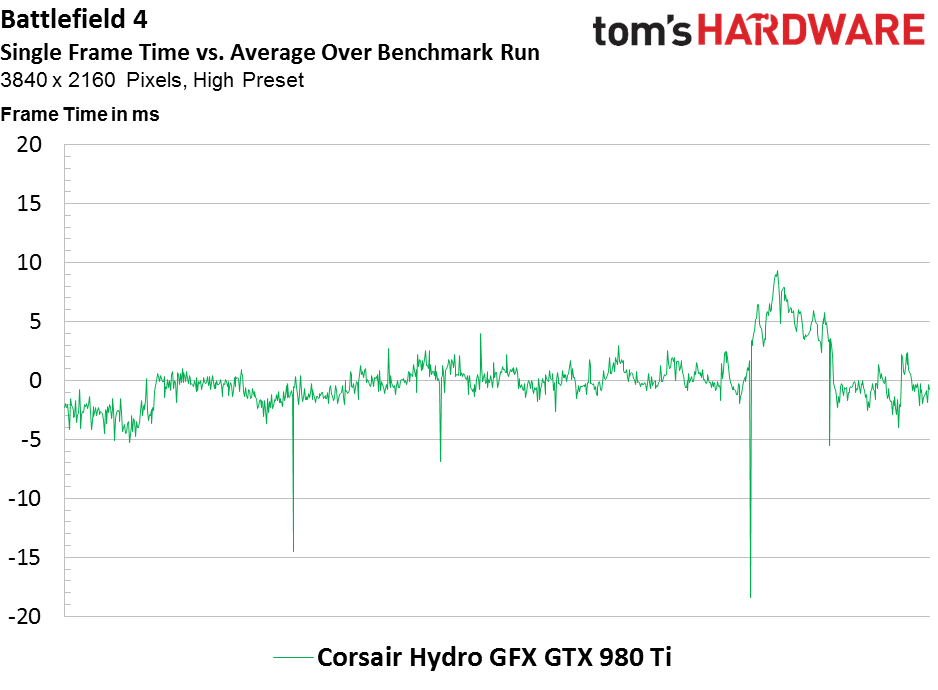
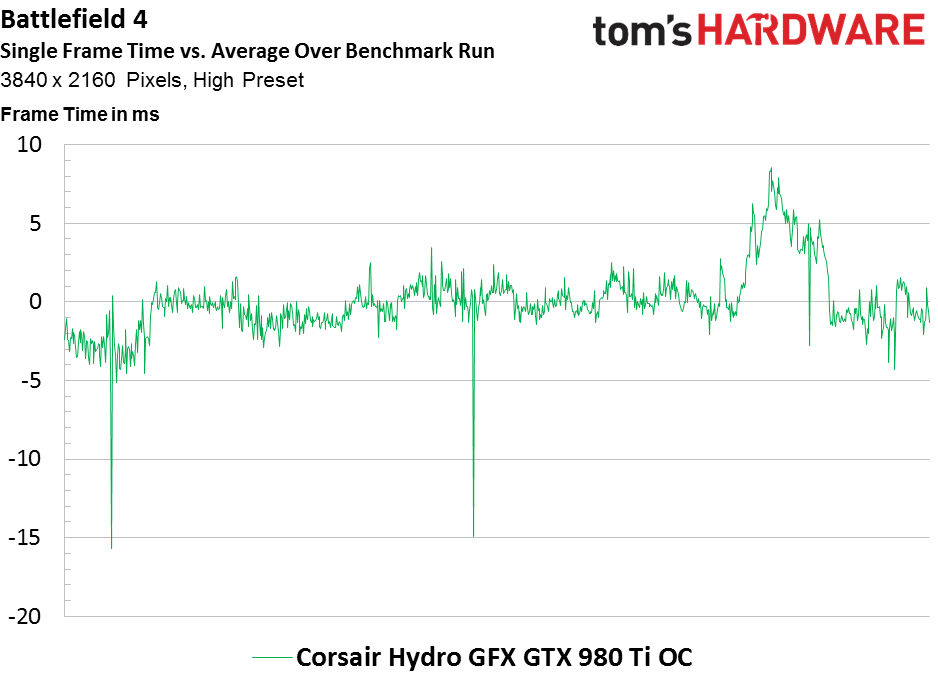
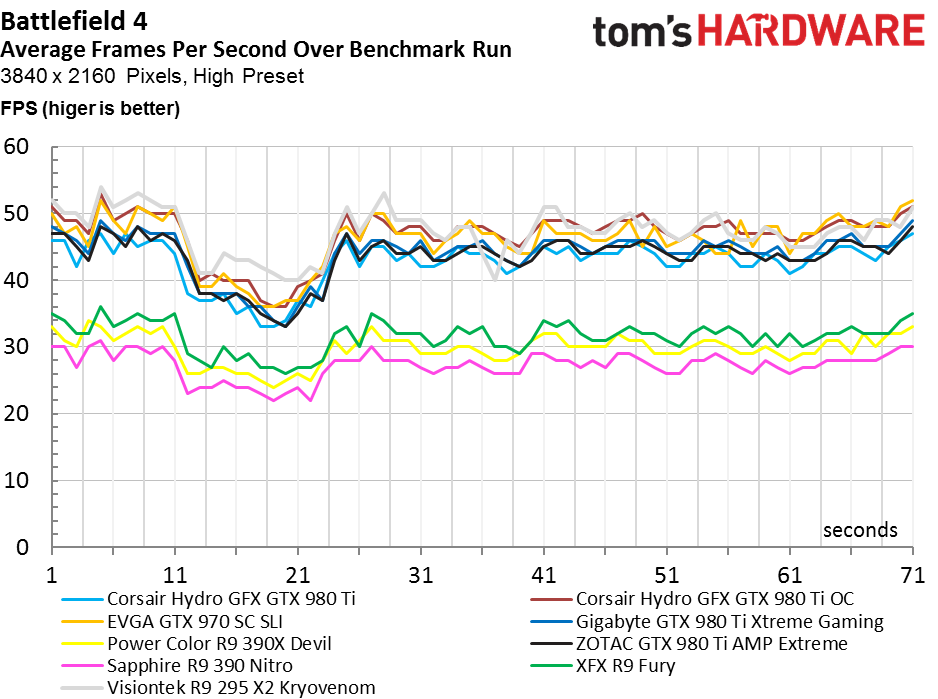
The test results also show that the Hydro GFX has plenty of performance left to tap. Our overclocked numbers leave Gigabyte's air-cooled offering in the dust.
Far Cry 4
In Far Cry 4, Corsair's Hydro GFX doesn't stand up as well to the Gigabyte card. With both boards operating at stock clock rates, Corsair trails by an average of roughly five frames per second.
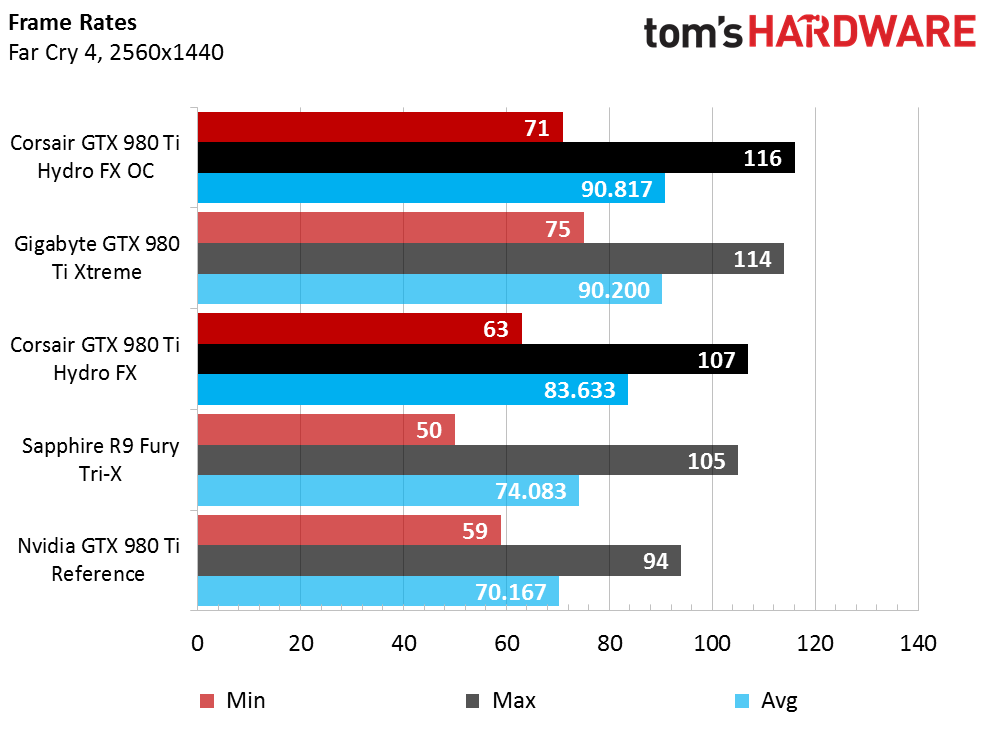
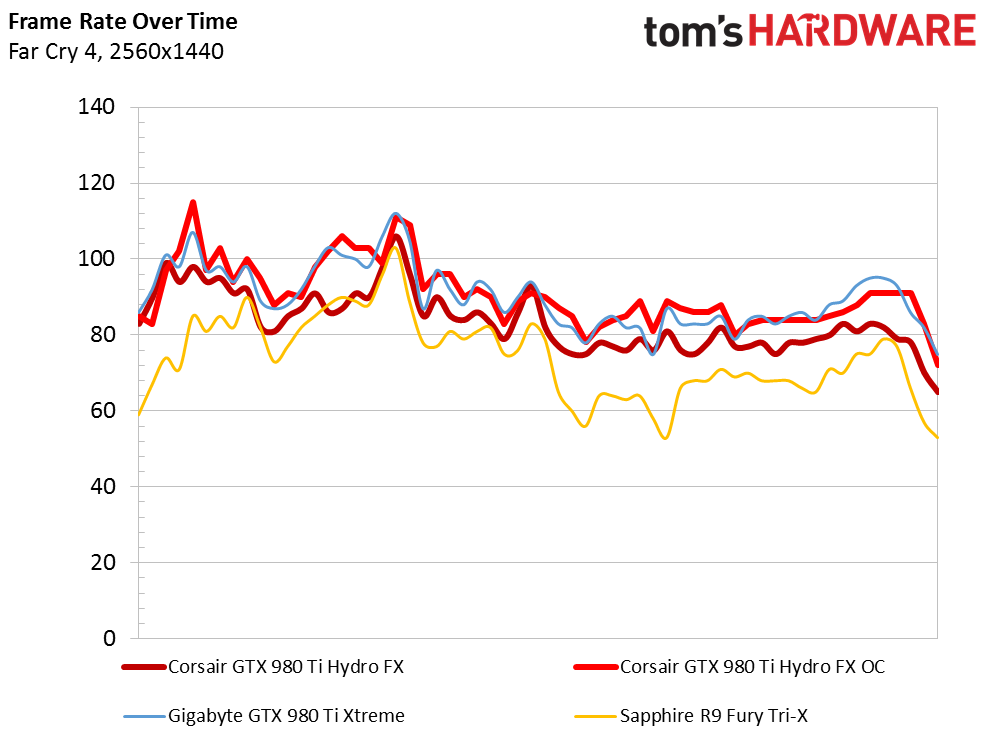
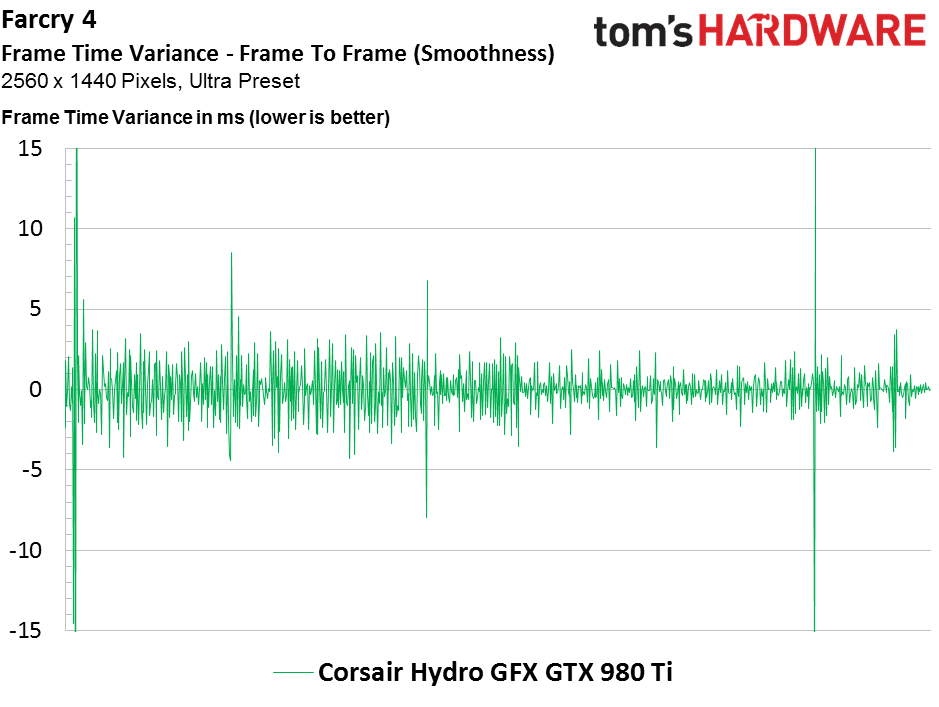
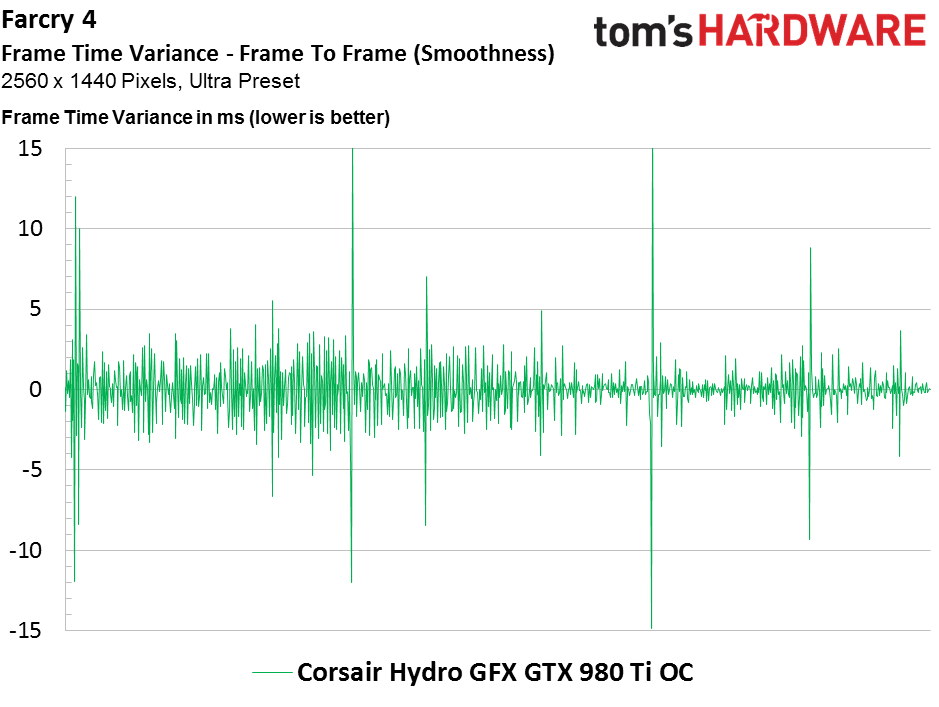
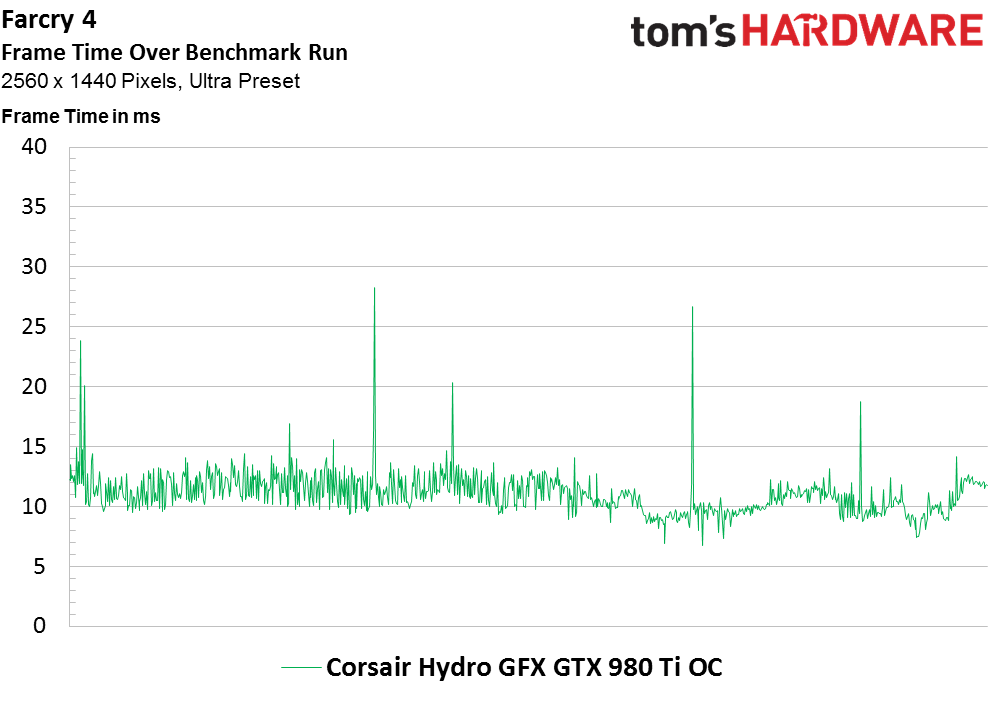
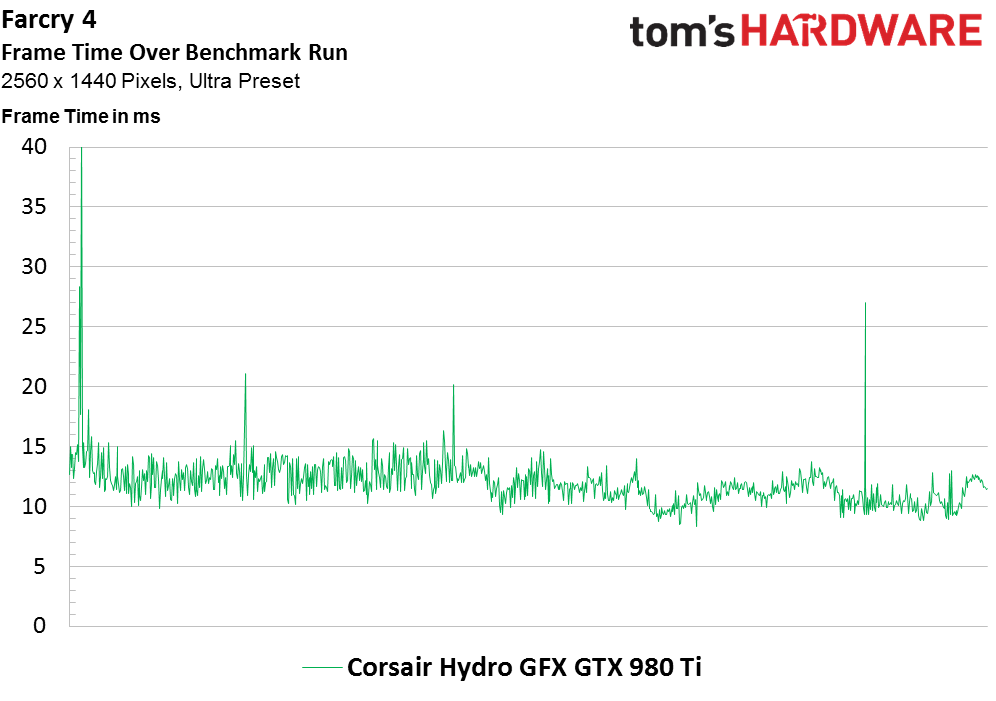
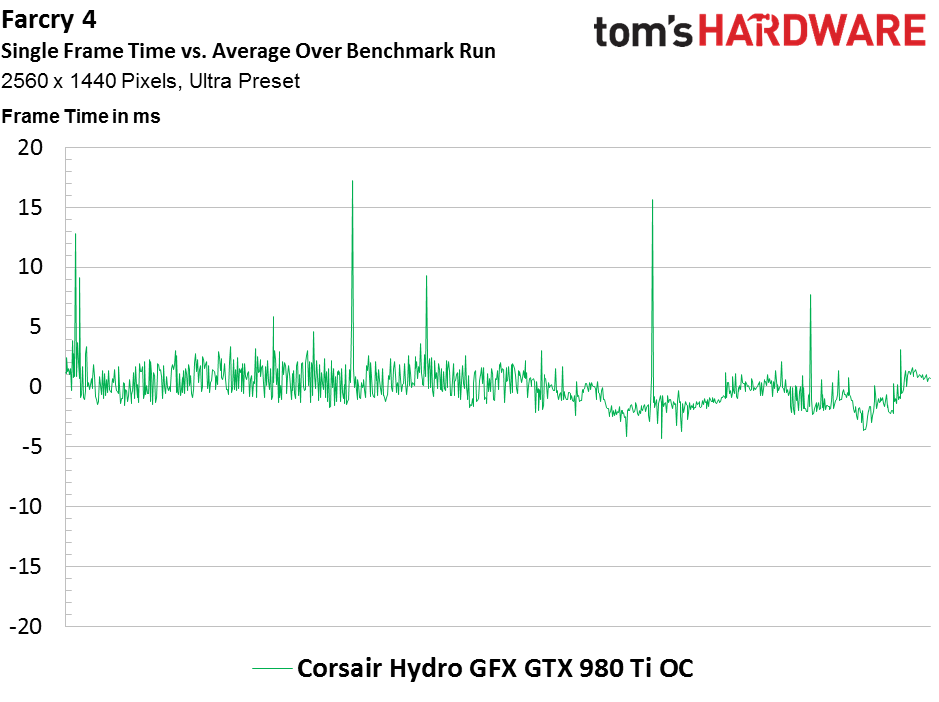
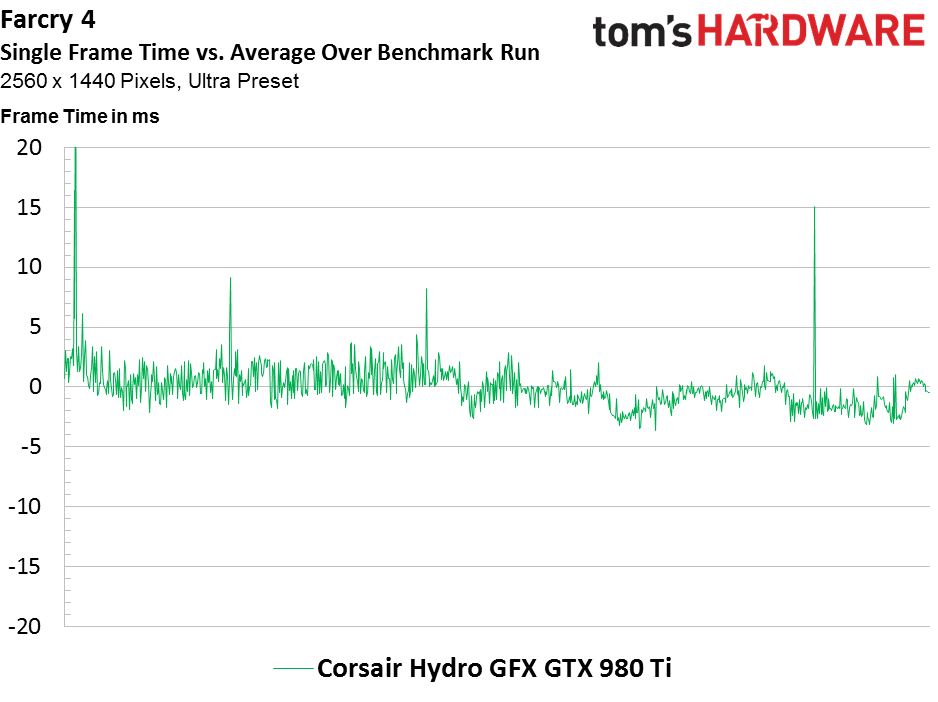
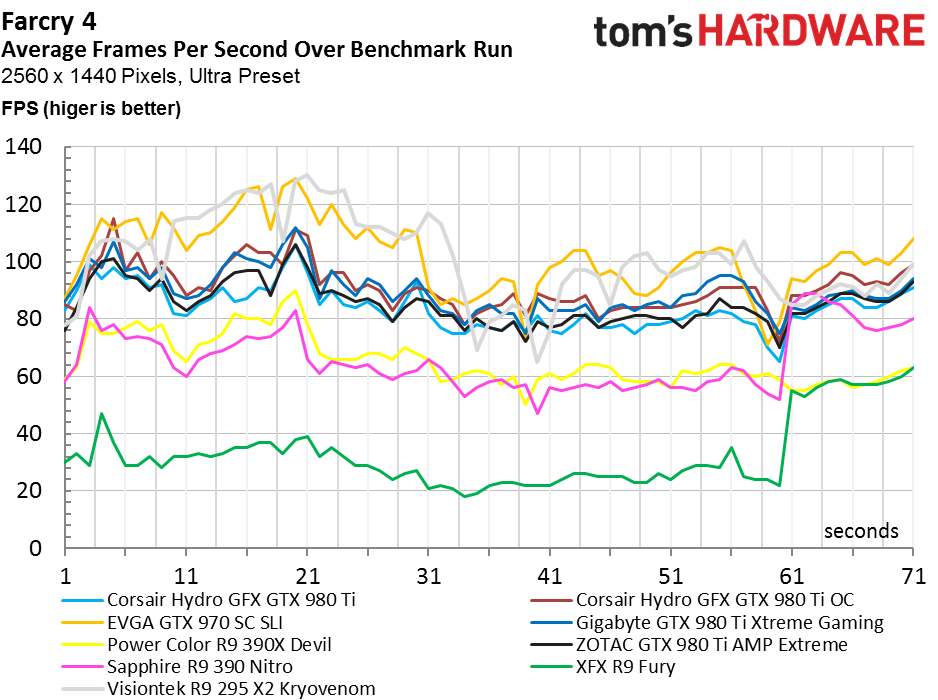
The gap closes at 3840x2160, but Gigabyte is still a couple of FPS faster, on average.
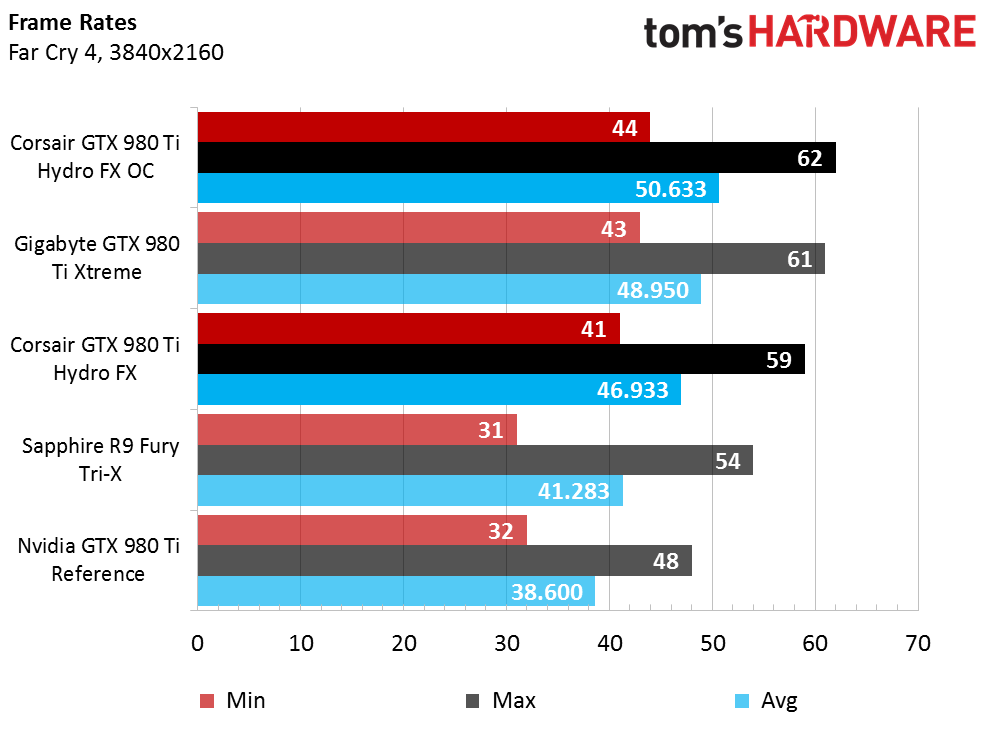
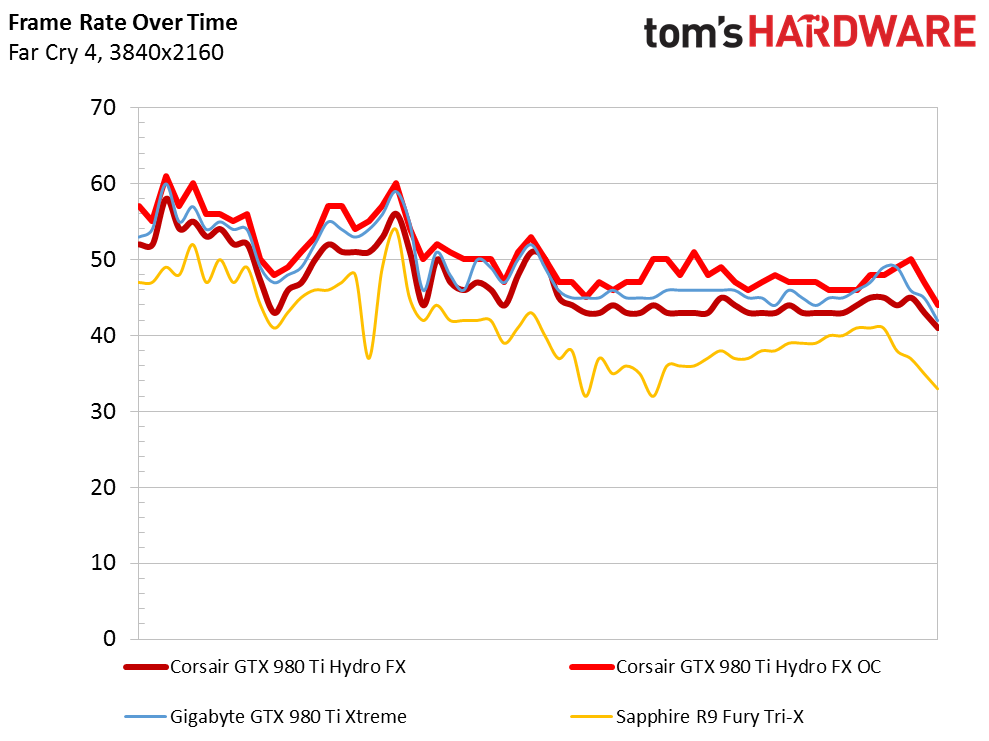
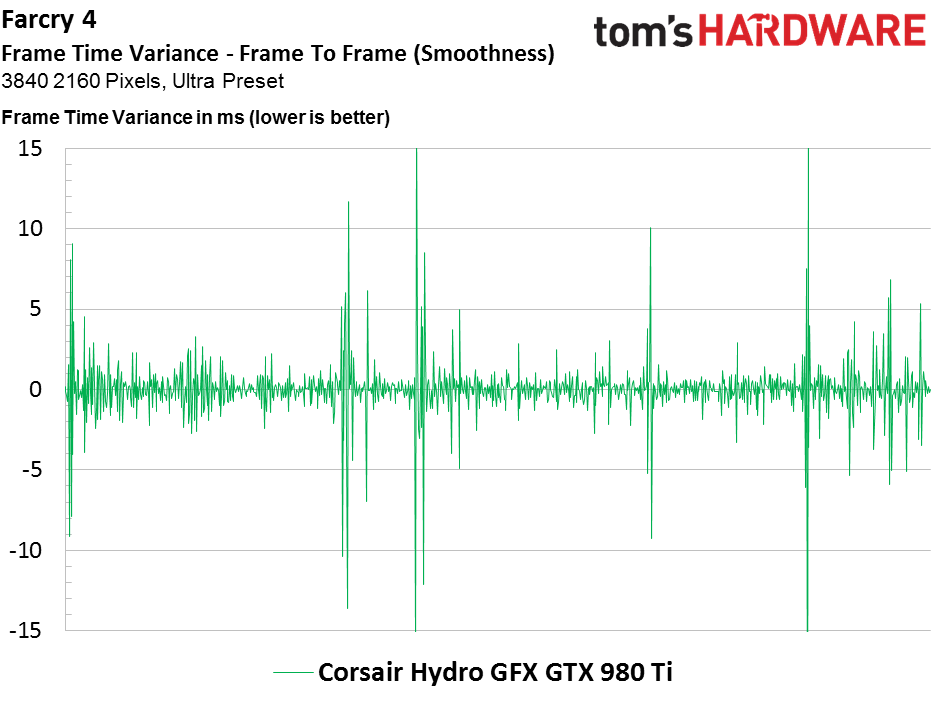
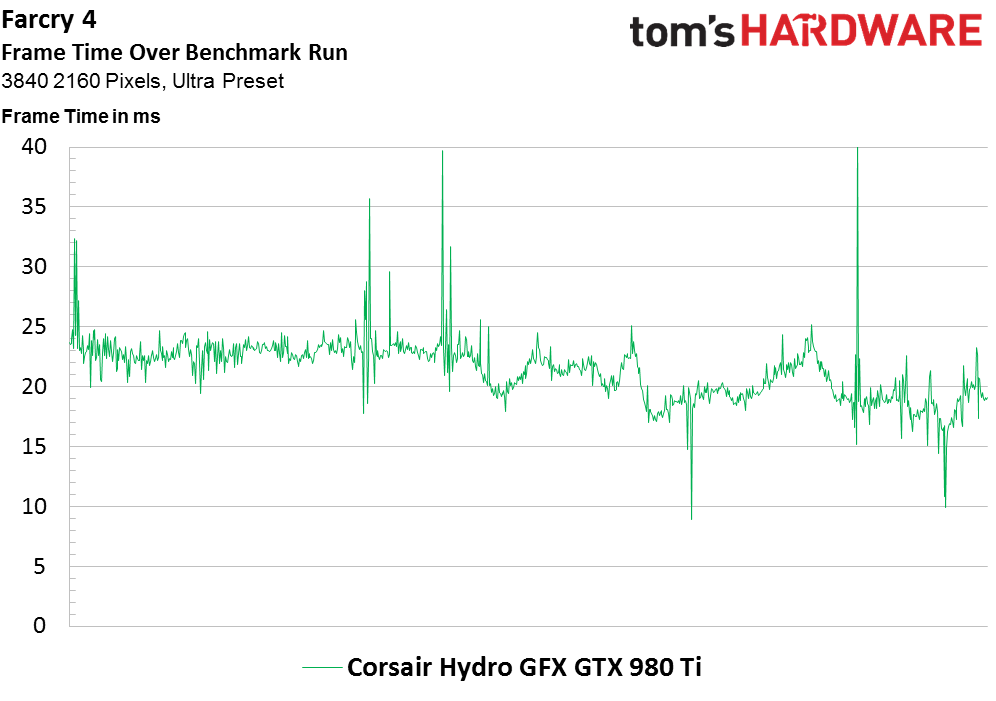
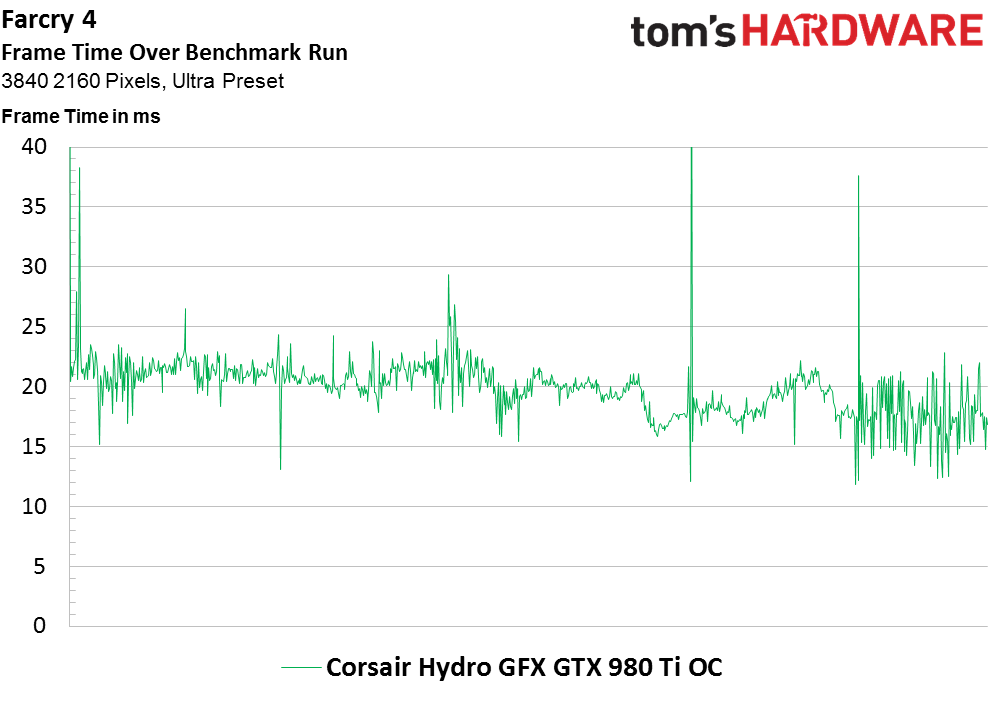
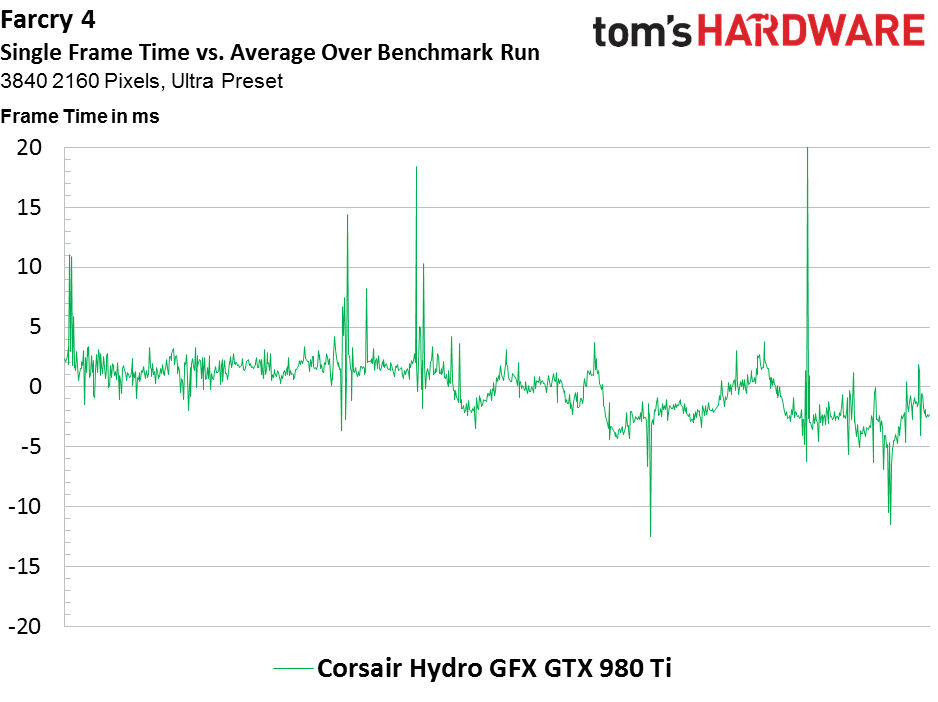
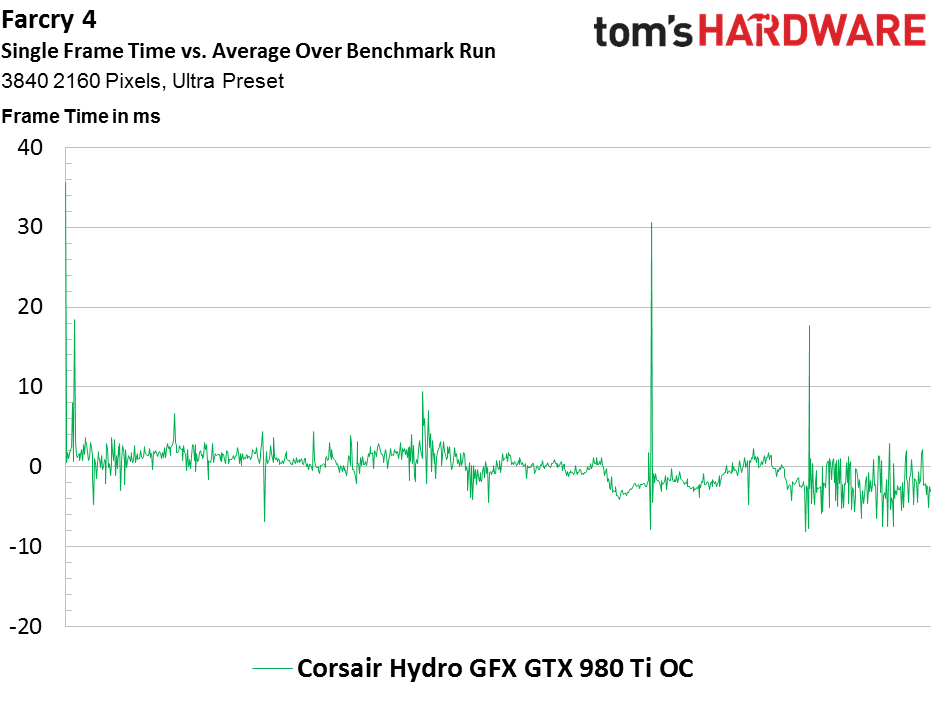
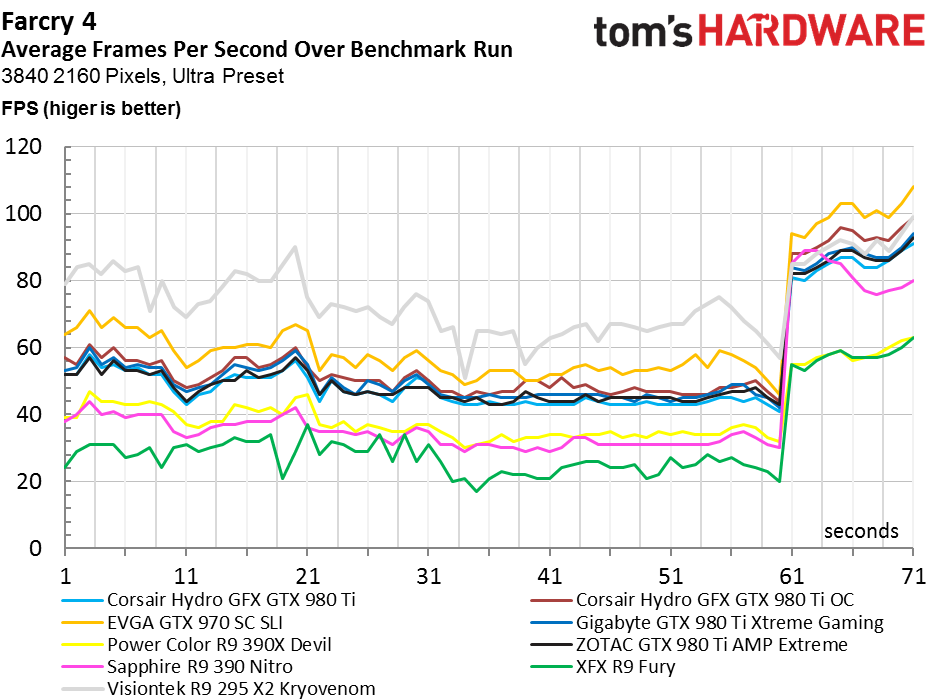
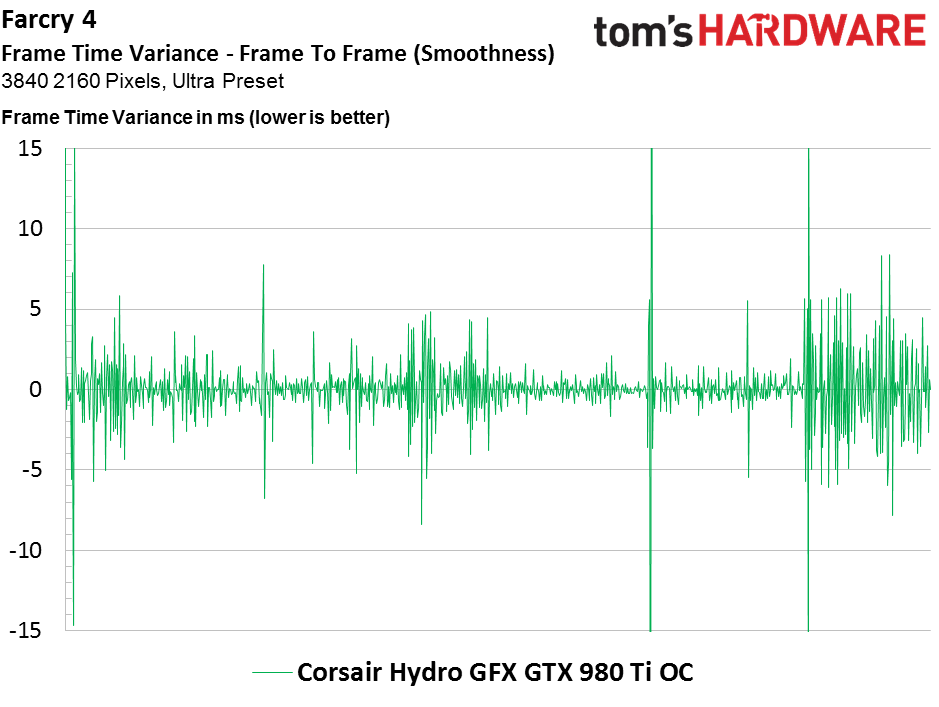
Overclocking Corsair's Hydro GFX yields the highest frame rates we've ever seen in Far Cry 4 at these settings. Using the Ultra preset at 3840x2160, the Corsair/MSI effort maintains an average frame rate in excess of 50 FPS.
GTA V
Corsair's Hyrdro GFX continues to impress in GTA V. In stock form, the card lands close enough to Gigabyte's GeForce GTX 980 Ti Xtreme Gaming that you could say they're roughly equivalent.
Get Tom's Hardware's best news and in-depth reviews, straight to your inbox.
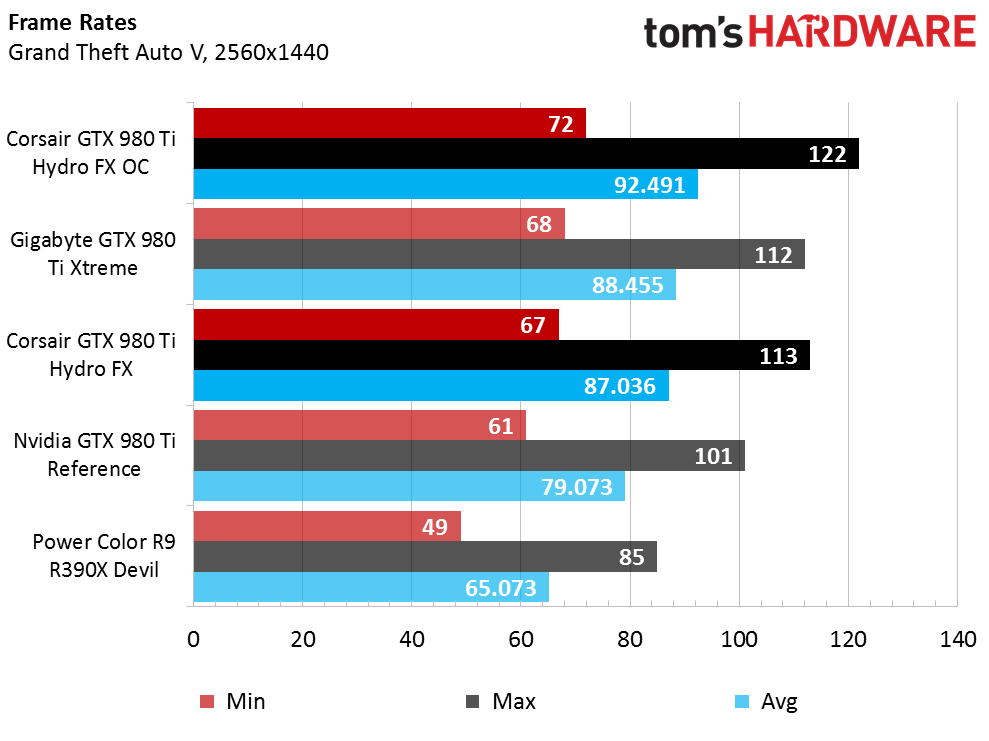
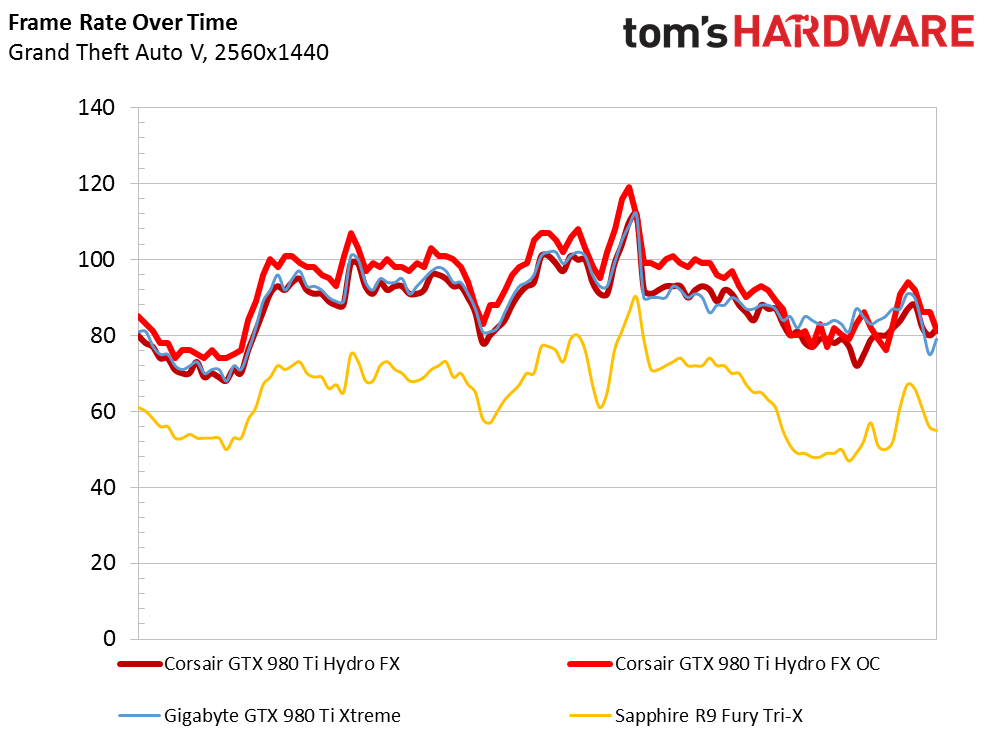
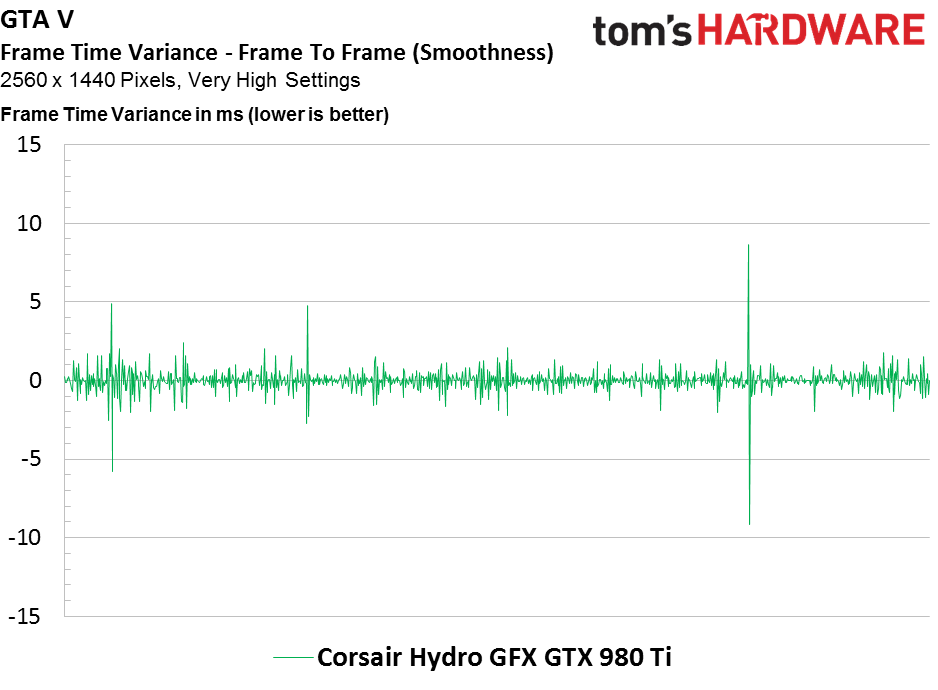
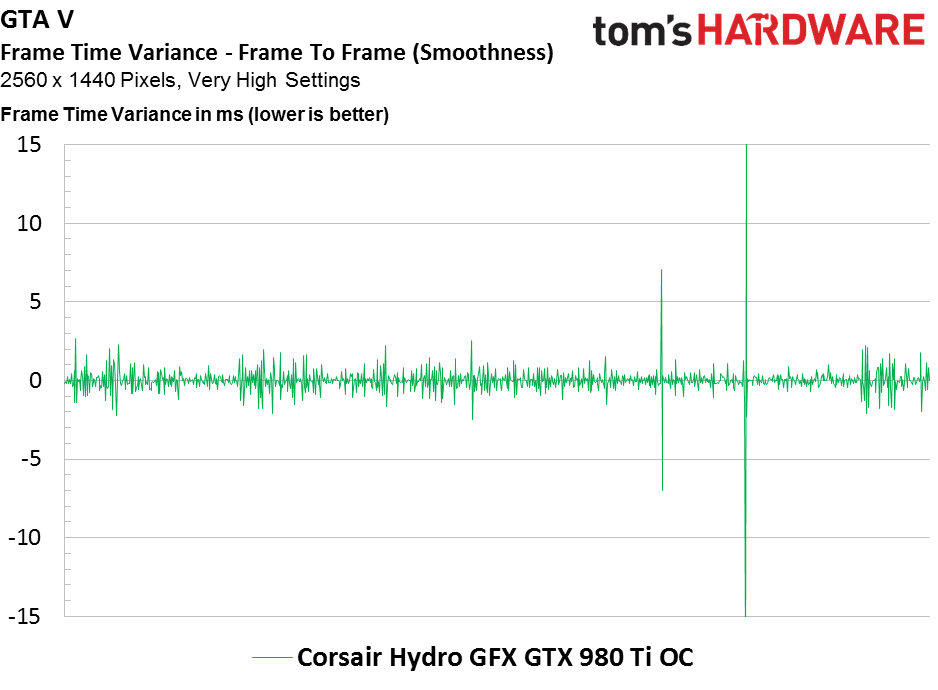
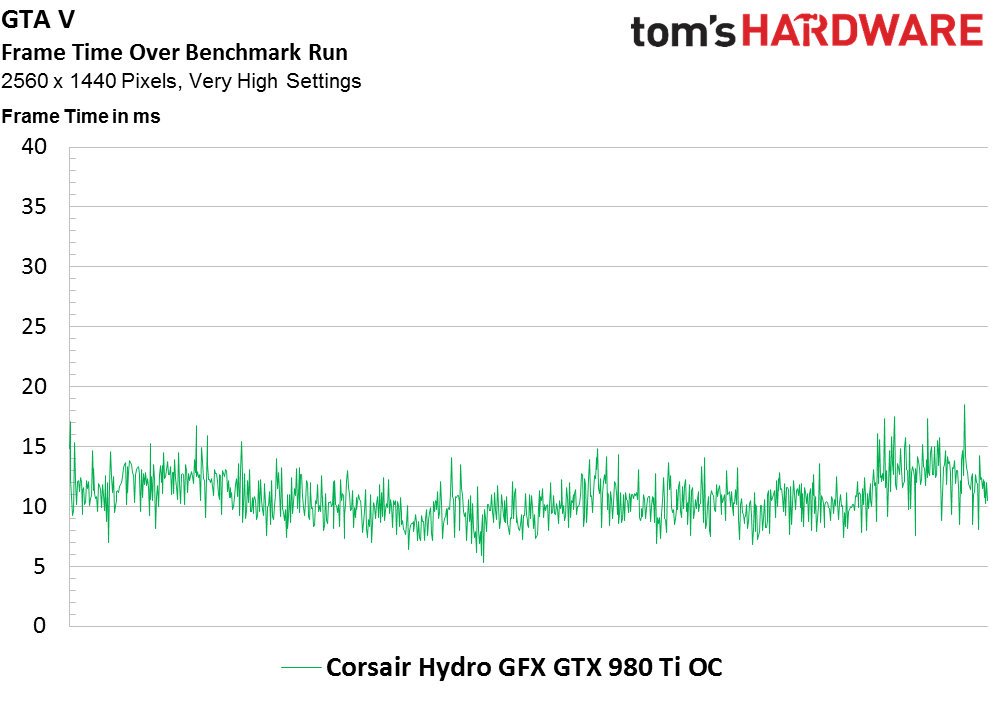
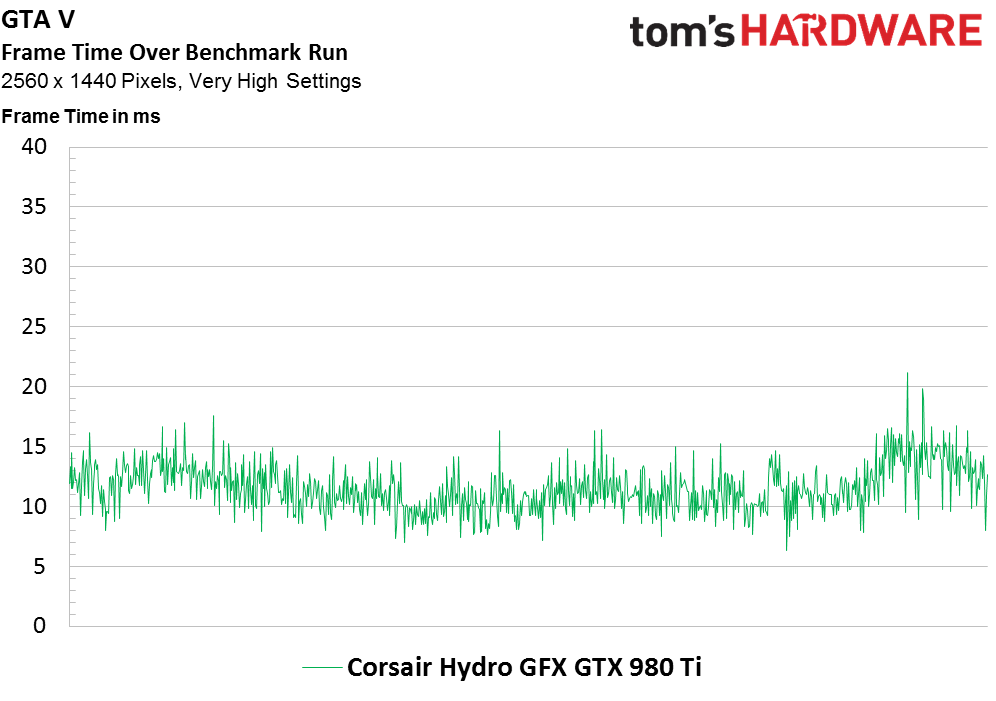
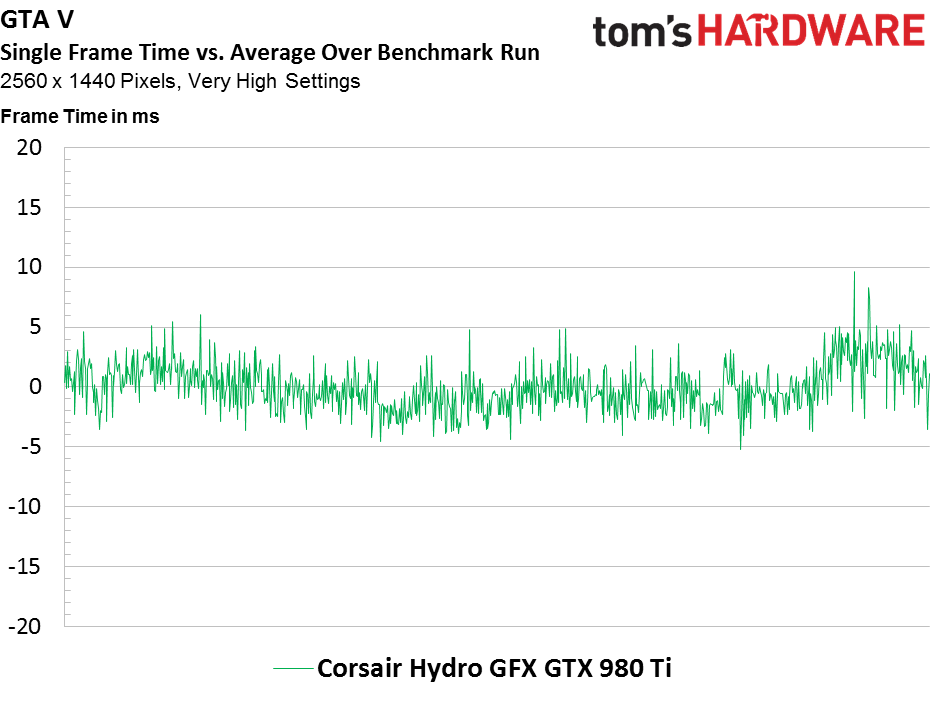
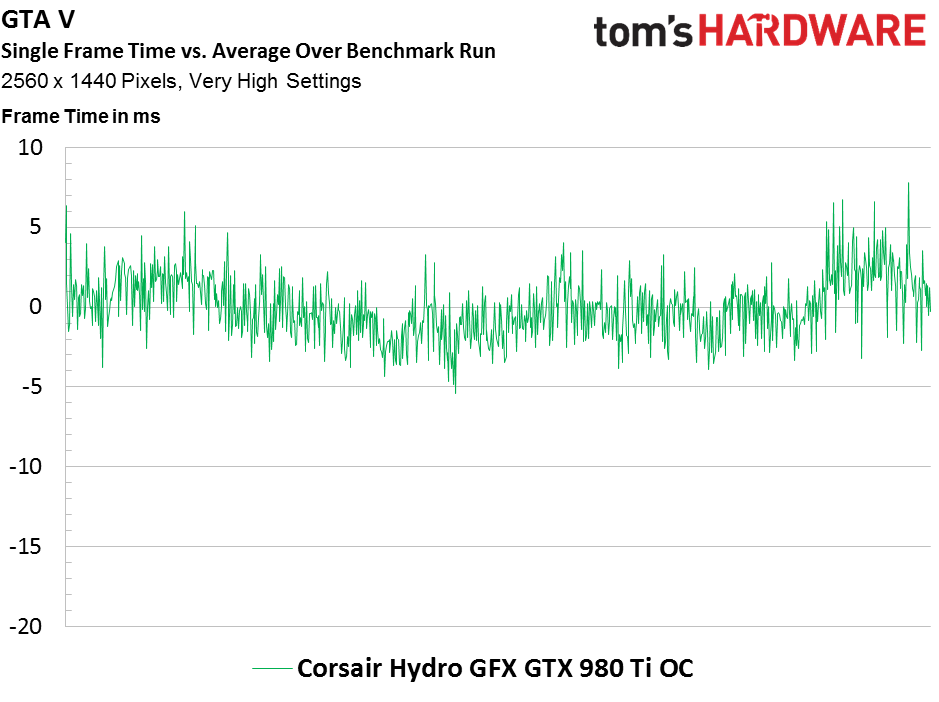
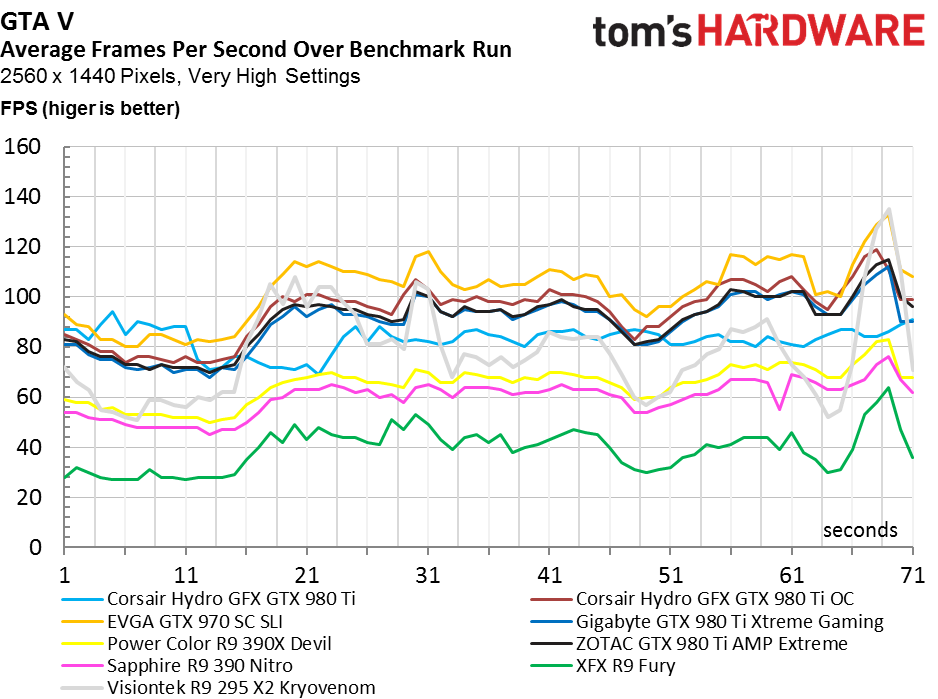
With the game set to 2560x1440, Corsair's card trails Gigabyte's by less than 1.5 FPS on average. But it also achieves slightly higher peak performance. Ultra HD performance mirrors the lower resolution's results.
The Hydro GFX responds well to our overclocked settings. Performance at 2560x1440 increases by more than 5 FPS, while Ultra HD jumps by about 4 FPS.
Metro: Last Light
Metro: Last Light runs smoothly at 2560x1440 thanks to the powerful Hydro GFX averaging 100 FPS. Even at its worst, the GM200-powered card never drops under 67 FPS. Gigabyte's card averages about 3 FPS more, but the differences is imperceptible.
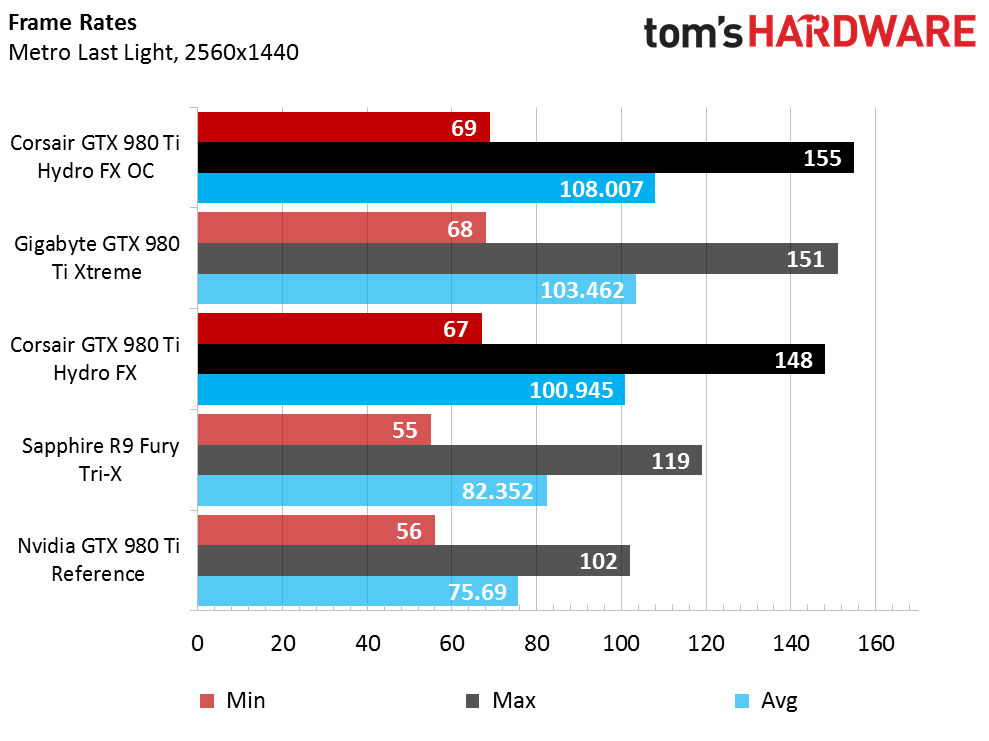
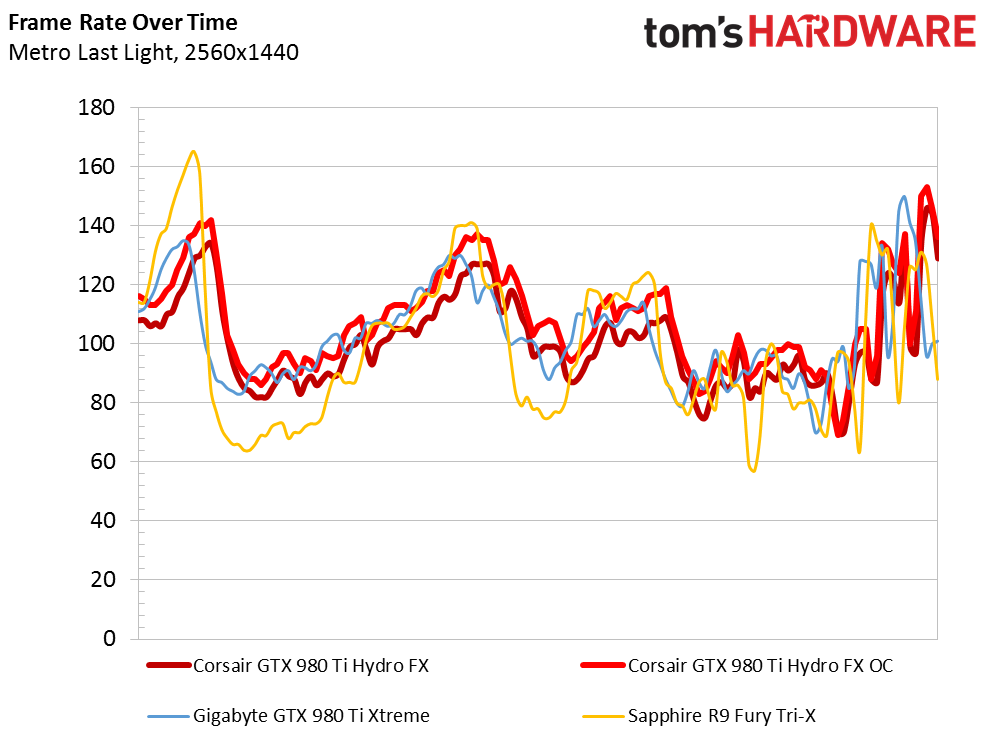
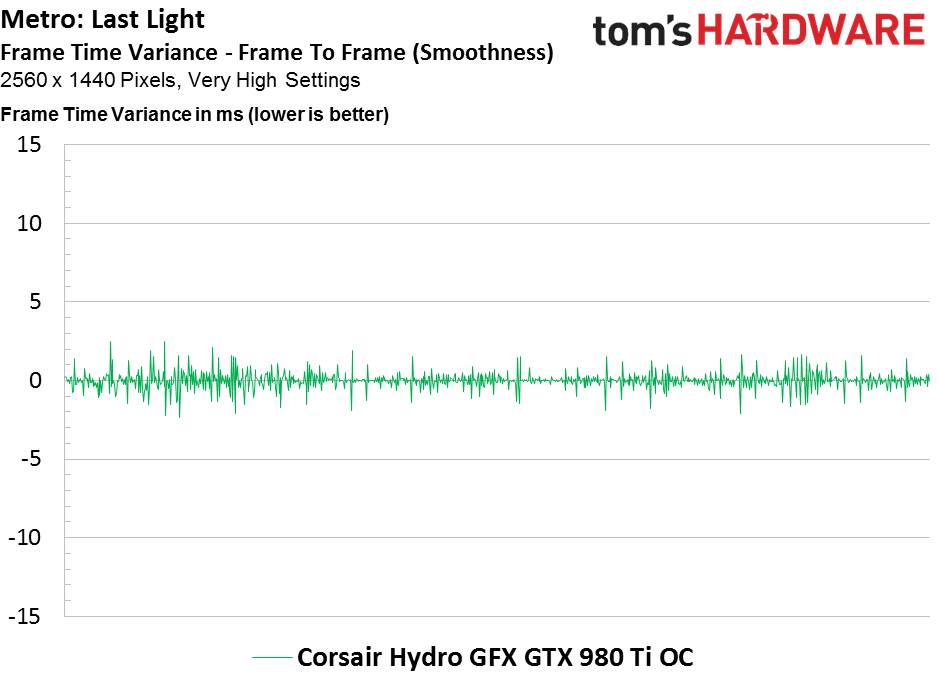
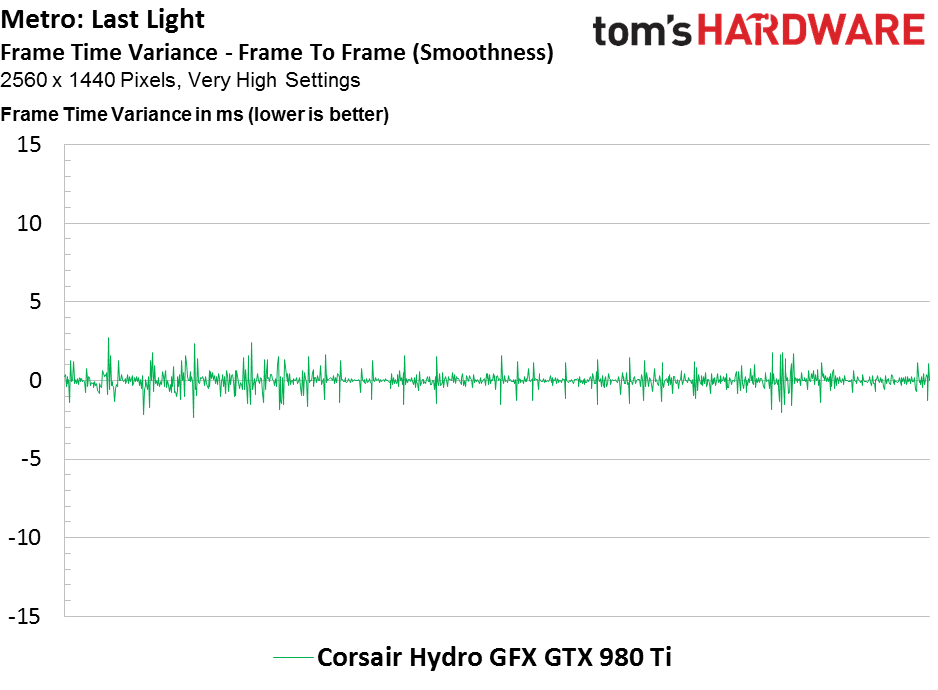
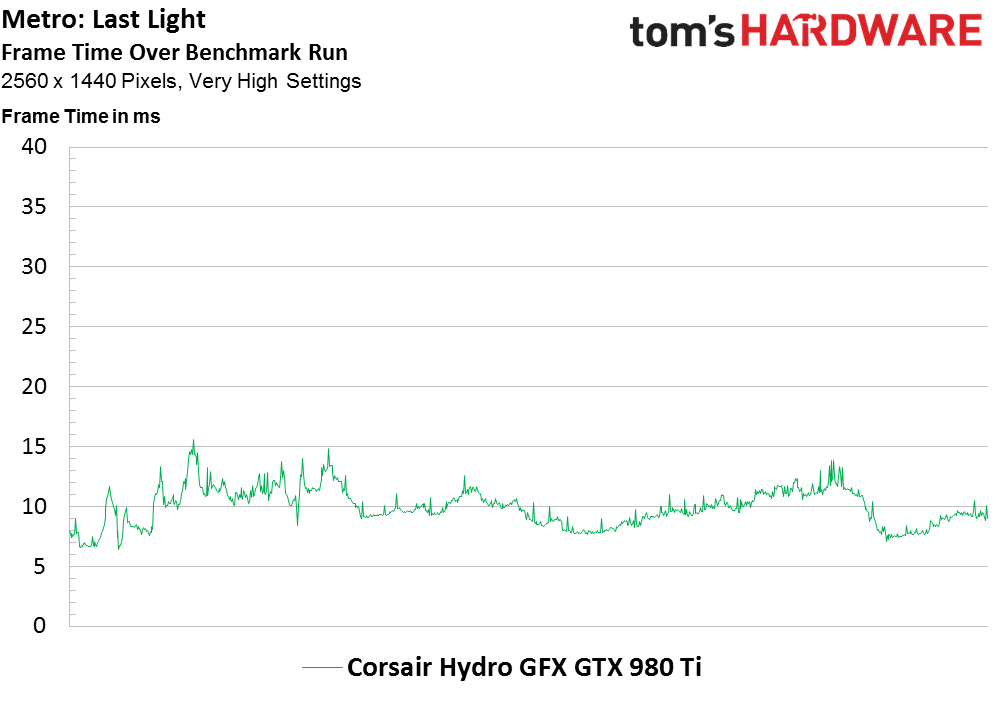
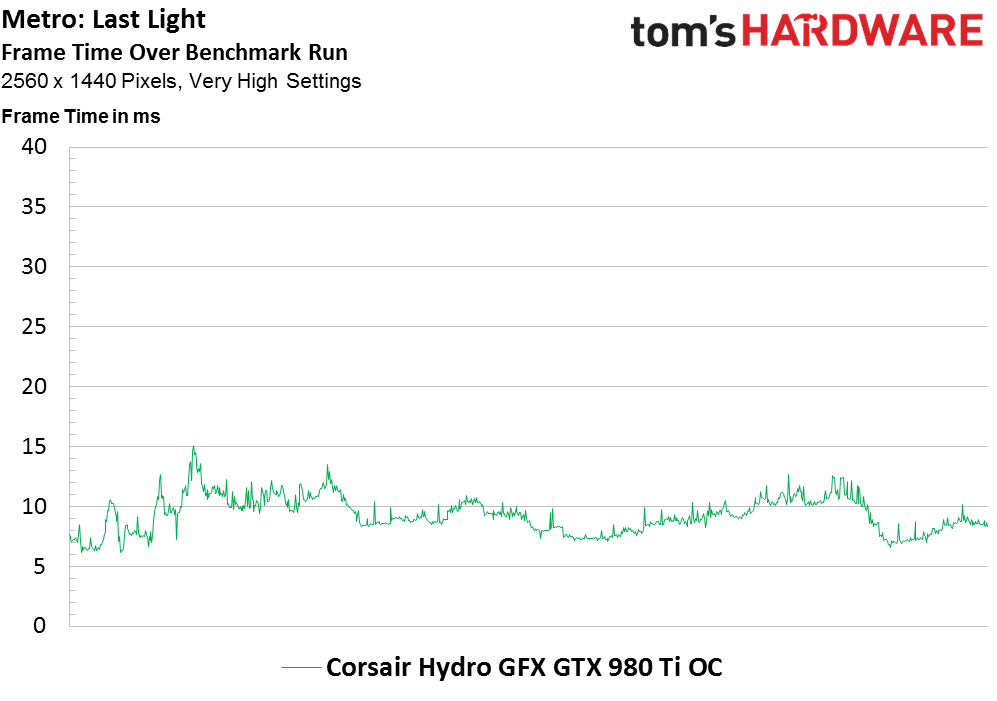
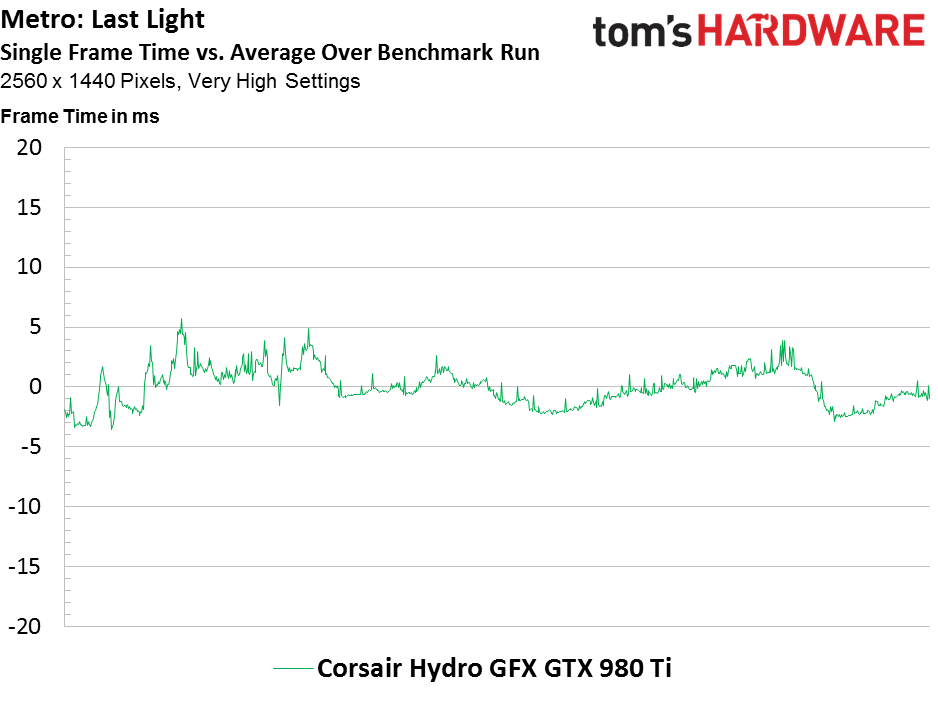
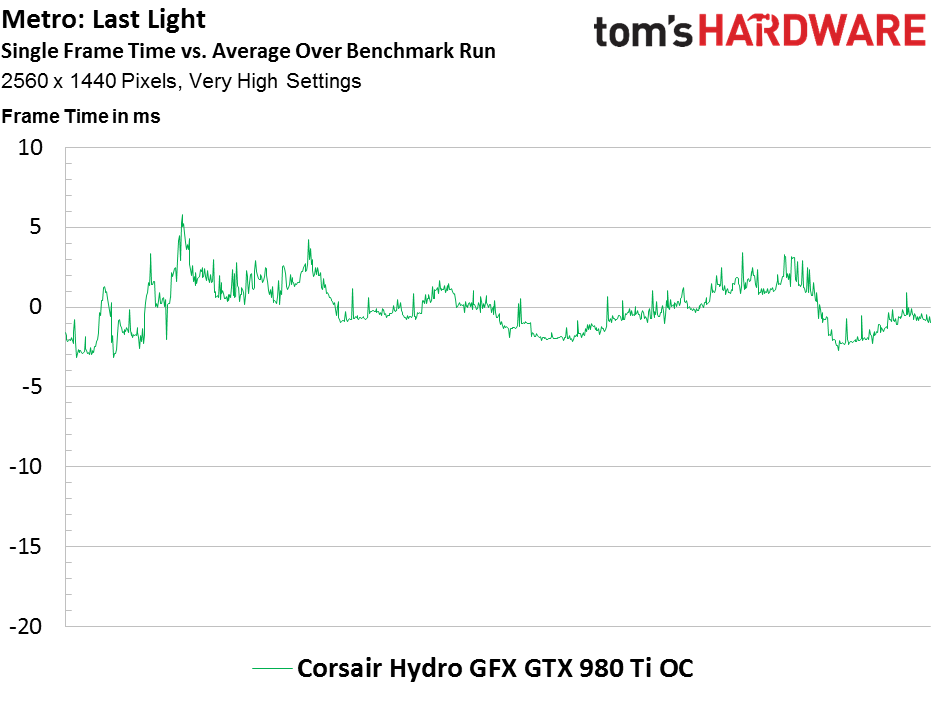
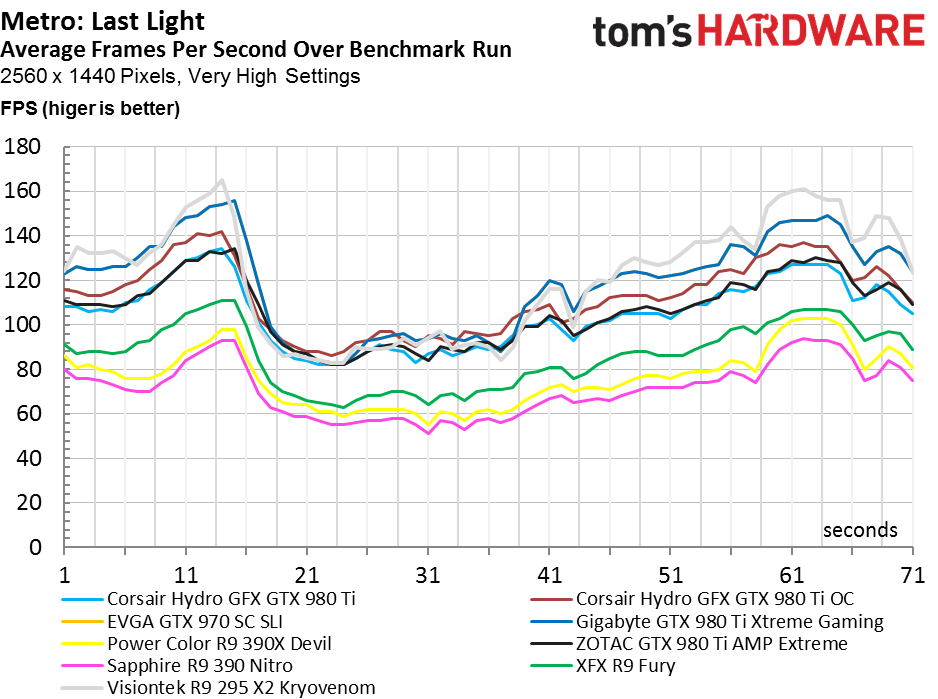
With the resolution dialed up to 3840x2160, average frame rates dip to the mid-40s. Still, the Hydro GFX keeps its head above 30 FPS at all times. Again, Gigabyte's card is the slightest bit faster.
The results increase predictably in the face of our overclocked core and memory frequencies. Corsair's card picks up 8 FPS at 1440p and more than 3 FPS at 2160p.
Shadow of Mordor
In stock form, Corsair's Hydro GFX averages more than 90 FPS in Middle-earth; the minimum only dips to 69 FPS. Gigabyte's overclocked GeForce GTX 980 Ti Xtreme Gaming is a little faster, but we're more impressed by the fact that Corsair's card averages 11 FPS more than Nvidia's reference configuration.
The 4K performance story is similar. Corsair's Hydro GFX blows the reference 980 Ti away, but comes in just behind Gigabyte's flagship.
Of course, once we overclock the Hydro GFX, it snatches the performance crown away. At 1440p, it averages 6 FPS higher. Running at 3840x2160, it gains about 3.5 FPS on average.
Tomb Raider
Of the six games in our benchmark suite, Tomb Raider does the best job of closing the gap between Corsair and Gigabyte. At 2560x1440, both cards average within one-tenth of a frame per second of each other.
The delta grows a bit at 4K, but the competitors still land less than 1 FPS apart.
Once again, the custom overclock proves to be beneficial. Corsair's Hydro GFX picks up 7 FPS at 2560x1440 and 4 FPS at 4K.
Current page: Gaming Benchmarks
Prev Page How We Test Next Page Overclocking, Temperature, Noise And PowerKevin Carbotte is a contributing writer for Tom's Hardware who primarily covers VR and AR hardware. He has been writing for us for more than four years.
-
envy14tpe These liquid cooled GPUs are cool, but why are they so fugly? I have yet to see one where the cables and style look good for the price. I'd rather slap a custom loop on a non liquid cooled GPU.Reply -
toddybody These hybrid coolers are just plain ugly.Reply
Why can't nVidia/board partners design a conventional block/pump as with the FuryX?
For the money, I'd rather buy a KINGPIN 980ti or CLASSIFIED...and would probably reach a higher OC because of it's improved PCB and power delivery. -
clonazepam Kevin Carbotte, thank you so much for the article.Reply
I'm really curious about this cooler. It's funny, I was just thinking about these Corsair coolers and what it might do for my reference Titan X. I've obviously hit the exact same clocks and performance level as the card in the article, prior to the voltage increase. I hit the power limit wall of 1370Mhz boost, with +390 on the memory, and being reference, less than 10 degrees to spare.
What I'm curious about is the additional performance gained from the voltage increase and hitting that boost of 1500Mhz. The gain from a Firestrike score of like 19500 to 20300 or something doesn't seem like much. The nerd in me though would probably justify the upgrade price just as an excuse to tinker with the card and all that.
How much do you think you gained from a power limited overclock to going all out? -
junkeymonkey I thought them seahawk cards were pulled due to the Asetek lawsuits ??Reply
that card been long gone
https://pcpartpicker.com/part/msi-video-card-gtx980tiseahawk
any updates on that would be nice to update me ....
toms OLD review of this card from 2015
http://www.tomshardware.com/news/msi-corsair-gtx-980ti-announced,30104.html -
clonazepam Reply17675998 said:I thought them seahawk cards were pulled due to the Asetek lawsuits ??
that card been long gone
https://pcpartpicker.com/part/msi-video-card-gtx980tiseahawk
any updates on that would be nice to update me ....
Its sold as a Corsair graphics card, directly from Corsair's own store. -
sillynilly I'm so confused - you say: "But because it doesn't appear commercially available, we can't consider it much more than an exhibition."Reply
However, it is listed for sale on Corsair's site for direct sale at $699.99. -
JackNaylorPE I really don't see the "surprise" here with the card being made by MSI .... someone else makes most of Corsair's products. It's disappointing to see a cooler review without a discussion of radiator material, presence of mixed metals nor fan rpm.Reply
In addition, the comparison between an overclocked Corsair / MSI card that manages beats down the Gigabyte G1 "outta the box" is not exactly "apples and apples". Head to head, both overclocked or both "outta the box", the G1 (and numerous other cards) take the performance crown and they do so while running quieter.
"Ultimately, we found a compromise with the GPU set to 1260MHz, GPU Boost at 1361MHz"
Gigabtye G1 1310 / 1399
http://tpucdn.com/reviews/Gigabyte/GTX_980_Ti_G1_Gaming/images/gpuz_oc.gif
MSI Gaming 1280 / 1381
http://tpucdn.com/reviews/MSI/GTX_980_Ti_Gaming/images/gpuz_oc.gif
"Gigabyte's GeForce GTX 980 Ti Xtreme Gaming is slightly less noisy, but Corsair's temperature advantage **justifies** its slight deficit in our acoustic measurements."
Justifies ? In what way ? The user is impacted in a real and measurable way by the additional noise. In what way does the user benefit, other than bragging rights at 50C ? Let's keep in mind that many 9xx series fans turn off their fans below 65C because manufacturers so need to have the noise below this temperature and the air cooled, overclocked G1 tops out at just 71C OC'd at load. A 2,000 pound rated hoist will get the same job done lifting a 1,000 pound load as a 5,000 pound rated hoist.
http://tpucdn.com/reviews/Gigabyte/GTX_980_Ti_G1_Gaming/images/temp.gif
If the OC will be limited in any way by temperatures, it's going to be via the conventionally cooled VRM rather than the 50C GPU. While 50C is a testament to the cooler design, as a "whole card", the hybrids bring nothing to the table for the additional $110, No performance throttling will occur until the card hits the 85Cthrottling point. It should also be noted that the G1 idles at 27C almost half as loud as the Hybrid.
I'm not against water cooling. I'm against consumers being duped into buying an C:LC type cooler for implied gains that are never materialized. I make these comments typing from a box with two watercooled cards (EK Blocks), 5 x 140m of rad in push / pull, and dual DDC pumps, I did it because I wanted a dead silent system, not because I expected better performance out of the video cards. The cards GPU runs about 44C under Furmark while fans remain inaudible... at 1200 rpm, I can hit 39C but as there is nothing to be gained from going so, I'll take the silence. The cards are overclocked 26% which is the max stable OC I was able to obtain with these particular cards. Best we have done on air with this card series was 28%. -
hardarse7 The GTX 1080 is *RIGHT* around the corner (April/May), with 2x performance per watt over the current cards. And the 1080Ti is going to have HBM2, probably in June. Why would anyone buy a GPU now with Pascal about to drop?Reply -
JackNaylorPE I think those expectations are extremely optimistic. While we expect the announcement in May / June ... we will 1st see the reference cards some time after that and then the non-refernce ones we actually want to buy some time again after that. The 980 Ti was released 9 months after the 980 ... I'd expect no faster delivery of the next Ti.Reply